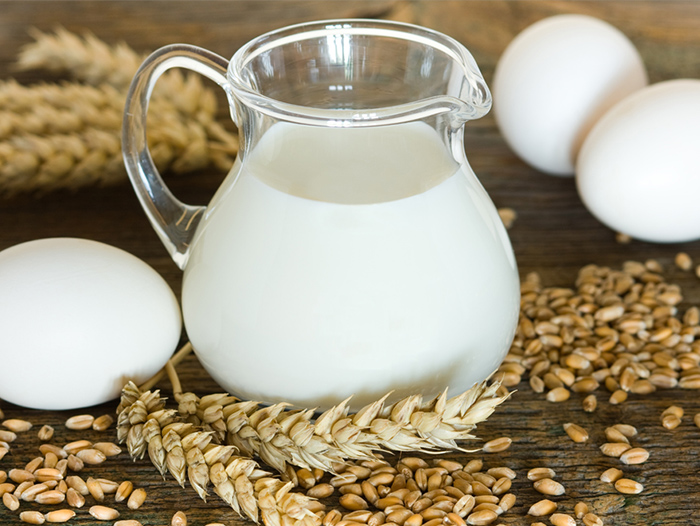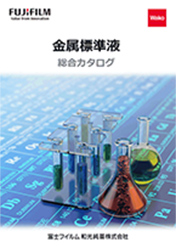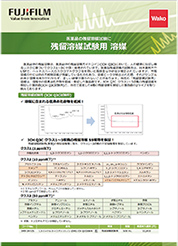- TOP
- Information about pharmaceutical drugs
- Statement from FUJIFILM Wako Pure Chemical
Statement from FUJIFILM Wako Pure Chemical
We issue our Statement on Raw Materials for Pharmaceutical Use to provide information about our products as well as information on our risk management during production of pharmaceutical raw material. Here are some of the details included in the statement. Statements are available on each product page.
Sample of cover page

Sample of impurity data page
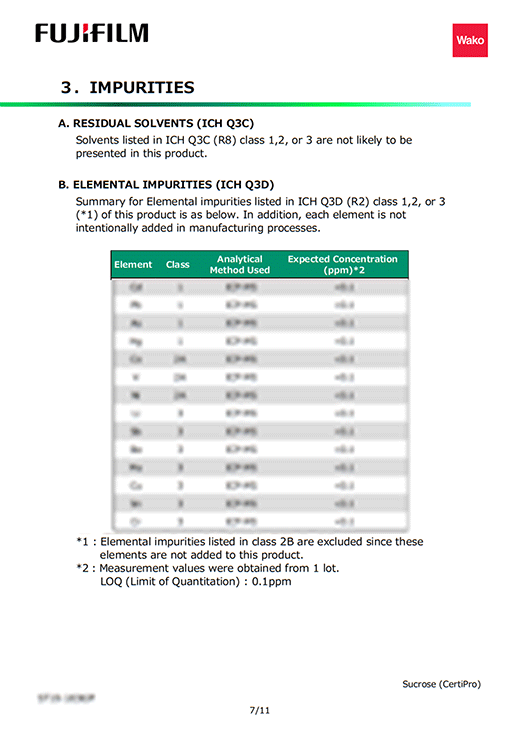
Elemental impurities
Elemental impurities present in pharmaceutical products derive from various sources, including residues of catalysts intentionally added during synthetic processes, naturally occurring impurities, and contaminants from manufacturing equipment and container/closure systems. The “Guideline for Elemental Impurities” (ICH Q3D) states that the levels of elemental impurities in the drug product should be controlled within acceptable limits, because the impurities do not provide any therapeutic benefit to the patient.
The Q3D guideline was incorporated into the JP 18th edition, and now control of elemental impurities is required. The elements listed in the JP are classified into 3 classes based on their toxicity level and potential for presence in drug formulations, and the permitted daily exposure (PDE) value is specified for each element in the JP.
Class 1: Elements with high human toxicity
Class 2: Elements with lower toxicity than those in Class 1 and route-dependent human toxicity
・Class 2A: Elements known to be naturally occurring with relatively high probability of occurrence in drug products
・Class 2B: Elements with low probability of existence in nature
Class 3: Elements with relatively low toxicity by the oral route of administration
Residual solvents
Residual solvents in pharmaceutical drugs are defined as organic volatile chemicals used or produced in the manufacture of drug substances or additives or in the preparation of drug products. In accordance with “Impurities: Guideline for Residual Solvents” (ICH Q3C), these solvents are classified into 3 classes based on potential risks to human health:
Class 1: Solvents to be avoided in the manufacture of pharmaceutical drugs
Class 2: Solvents to be limited in pharmaceutical drugs
Class 3: Solvents with low toxic potential
The limits for residual solvents proposed in the Q3C guideline were incorporated into the JP 17th edition.
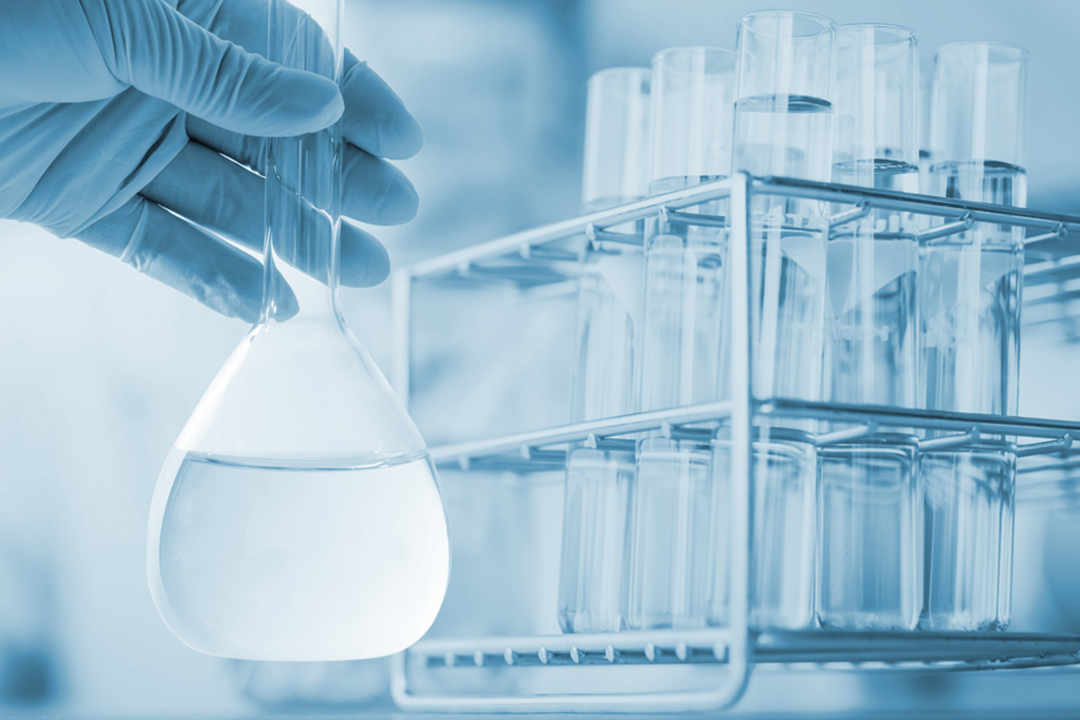
GMOs
“GMO” stands for “genetically modified organisms,” which are organisms (animals, plants, and microorganisms) whose genetic material has been altered using genetic engineering. Recombinant DNA technologies, which are used frequently in genetic modification of crops, can create new properties of source organisms such as plants by encoding cells with useful genetic information obtained from living organisms. The new properties thus created are expected to provide the plants, etc. with enhanced resistance to pests, resistance to specific herbicides, and improved productivity to help solve food and environmental problems.
In Japan, the commercial sale of genetically modified foods requires confirmation of their safety based on the Food Sanitation Act and the Food Safety Basic Act. Applications for their marketing approval are reviewed by experts to determine whether the methodologies used are scientifically valid, whether there is no lack of data, etc. Thus, genetically modified crops on the market are confirmed to be safe.

Allergy prevention
Although not frequently, certain substances in foods may be recognized by the human body as foreign substances, despite they should not be harmful in nature for humans, and cause hypersensitivity reactions as defense mechanisms. Such substances are called “food allergens,” and those reactions called “food allergy.” To prevent potential harm to people with food allergy, certain food stuffs are legally designated as “specified raw materials” based on records of the severity and frequency of past health hazards.
There is no labeling obligation for pharmaceutical drugs; however, in order for pharmaceutical company to evaluate the influence of allergen to users, we determine whether any of the following 28 specified raw materials, and also latex, were purposefully used or not, whether used on the same line., etc., and proactively provide the information thus collected for objective evaluation of their impact on the final product.
List of 28 specified raw materials
- • Shrimp
- • crab
- • wheat
- • buckwheat
- • egg
- • milk
- • peanut
- • almond
- • abalone
- • squid
- • salmon roe
- • orange
- • cashew nut,
- • Kiwi fruit
- • beef
- • walnut
- • sesame
- • salmon
- • mackerel
- • soybean
- • chicken
- • banana
- • pork
- • macadamia nuts
- • peach
- • yam
- • apple
- • and gelatin
